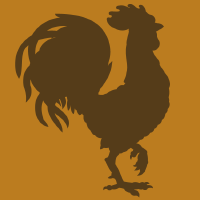Topic Editors

Advances in Infectious and Parasitic Diseases of Animals

Topic Information
Dear Colleagues,
Advances in infectious and parasitic diseases of animals is an evolving field dedicated to the prevention, diagnosis, and treatment of infectious diseases that affect livestock and wildlife. This area of veterinary medicine is critical for ensuring animal welfare, protecting food security, and sustaining the economic viability of livestock industries. Infectious and parasitic diseases in animals, particularly those caused by bacterial, viral, fungal, and parasitic pathogens, pose a significant threat to animal health and can lead to outbreaks that devastate populations. These diseases can also have profound economic consequences, reducing productivity and increasing veterinary costs. Key advances in this field include improved diagnostic techniques, such as molecular methods and rapid testing platforms, which allow for earlier detection and more accurate identification of pathogens. Vaccination strategies have also evolved, with new vaccines being developed to target emerging and resistant strains. Furthermore, antimicrobial and antiparasitic stewardship is becoming an essential component in controlling the spread of infectious diseases, with a growing emphasis on the responsible use of antibiotics and antiparasitics to prevent resistance. Understanding the epidemiology of infectious and parasitic diseases, including modes of transmission and risk factors, is central to devising effective control measures. Environmental factors, animal management practices, and genetic susceptibilities are being studied to reduce the incidence and spread of diseases. Additionally, the development of novel therapies, including alternative antimicrobial and antiparasitic agents and immune-modulating treatments, shows promise in the fight against resistant pathogens. The One Health approach, recognizing the interconnectedness of human, animal, and environmental health, is gaining momentum in tackling zoonotic diseases—those that can be transmitted between animals and humans. Continued research, collaboration, and innovation in infectious disease management are essential for maintaining animal health, ensuring food safety, and mitigating the risk of zoonotic transmission.
- Pathogens Affecting Animal Health: Overview of Major Species; Virulence Factors and Host–Pathogen Interactions;
- Epidemiology and Surveillance: Geographic and Temporal Trends; Risk Factors and Transmission Dynamics;
- Diagnostic Approaches: Traditional Culture-Based Methods; Molecular and Serological Techniques; Emerging Technologies and Point-of-Care Diagnostics;
- Disease Manifestations and Clinical Presentation: Clinical Signs and Symptoms; Subclinical Infections and Carrier States;
- Immunization and Vaccination Strategies: Existing Vaccines and their Efficacy; Novel Vaccine Development and Antigen Selection;
- Antibiotic and Antiparasitic Usage and Antimicrobial/Antiparasitic Resistance: Responsible Use of Antibiotics and Antiparasitic; Surveillance of Resistance Patterns;
- Treatment Modalities: Antibiotic and Antiparasitic Therapies and Drug Selection; Alternative Therapeutic Approaches; Integrative Approaches: Combining Pharmaceuticals and Vaccines;
- Experimental Models and Study Populations: In vitro Models; Animal Trials and Field Studies; Epidemiological Surveys;
- Case Studies and Clinical Reports: Illustrative Cases of Animal Infectious and Parasitic Diseases; Diagnostic Challenges and Successes; Treatment Outcomes and Lessons Learned;
- Future Directions and Innovations: Emerging Trends in Animal Disease Research; Promising Technologies and Methodologies; Recommendations for Future Studies and Policies;
- Zoonotic Diseases: Pathogens; Risk Factors and Transmission Dynamics; Responsible Use of Antibiotics and Antiparasitic; Surveillance of Resistance Patterns; Case Studies and Clinical Reports.
Prof. Dr. Felipe M. Salvarani
Dr. Sheyla Farhayldes Souza Domingues
Prof. Dr. Júlia Angélica Gonçalves Da Silveira
Topic Editors
Keywords
- animal health
- pathogens
- zoonotic
- epidemiology
- diagnosis
- clinical presentation
- immunization
- vaccine
- antibiotic
- antimicrobial resistance
- treatment
Participating Journals
| Journal Name | Impact Factor | CiteScore | Launched Year | First Decision (median) | APC | |
|---|---|---|---|---|---|---|

Agriculture
|
3.3 | 4.9 | 2011 | 19.2 Days | CHF 2600 | Submit |

Animals
|
2.7 | 4.9 | 2011 | 16.1 Days | CHF 2400 | Submit |

Antibiotics
|
4.3 | 7.3 | 2012 | 15.8 Days | CHF 2900 | Submit |

Microorganisms
|
4.1 | 7.4 | 2013 | 11.7 Days | CHF 2700 | Submit |

Poultry
|
- | - | 2022 | 28.8 Days | CHF 1000 | Submit |

Pathogens
|
3.3 | 6.4 | 2012 | 15.3 Days | CHF 2200 | Submit |

Veterinary Sciences
|
2.0 | 2.9 | 2014 | 21.2 Days | CHF 2100 | Submit |

MDPI Topics is cooperating with Preprints.org and has built a direct connection between MDPI journals and Preprints.org. Authors are encouraged to enjoy the benefits by posting a preprint at Preprints.org prior to publication:
- Immediately share your ideas ahead of publication and establish your research priority;
- Protect your idea from being stolen with this time-stamped preprint article;
- Enhance the exposure and impact of your research;
- Receive feedback from your peers in advance;
- Have it indexed in Web of Science (Preprint Citation Index), Google Scholar, Crossref, SHARE, PrePubMed, Scilit and Europe PMC.



